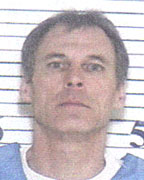Perceptions of crime are changing in California. The very real threats that we experienced leading up to the mid 1990’s have been replaced by complacency in the early 2010’s. Society seems to have forgotten that the threat of crime diminishes our social structure, creates fear in our neighborhoods, leaves victims of property crimes feeling vulnerable and victims of violence broken or dead. That, and concerns about runaway budgets, financial mismanagement, and the role of government have created a climate in which our elected leaders believe, and people support, the notion that it is better to release criminals back into society rather than the build the prisons necessary to house convicted criminals.
On November 6, California voters will choose whether or not to modify California’s Three-Strikes-and-You’re Out law when we vote on Proposition 36. Thousands of three-strike prisoners, individuals who have at least two prior serious or violent felony convictions on their rap-sheet may be eligible for re-sentencing hearings that can put them back onto our streets.
If passed in November, Proposition 34 will retroactively overturn California’s death penalty in favor of a sentence of life without the possibility of parole (LWOP). Prop 34 proponents say that this will guarantee, among other things, that remorseless baby killers, cop killers, serial killers, and mass murderers will die in prison. What they fail to mention is that on September 30, Governor Brown signed Senate Bill 9, which can overturn LWOP sentences for 309 remorseless killers currently housed in our prison system.
October represents the one-year anniversary of Assembly Bill 109, Governor Brown’s Prison Realignment Program. Realignment is supposedly the most benign of the measures being promoted in the current trend towards prison reform, because under Realignment, inmates who are classified as non-serious, non-violent, and non-sexual offenders are sent to local jails instead of California state prisons or put under community supervision. However, these Post-Release Community Supervision inmates (PRCS) could have prior convictions for murder or sexual offenses as long as their most recent conviction was for a non-serious, non-violent, and non-sexual crime.
The Sacramento-based Criminal Justice Legal Foundation has been tracking the impact of Governor Brown’s Realignment Law (AB109) since it took effect in October 2011. Here are some of their findings.
According to the minutes of a recent Los Angeles county meeting on Realignment, “Thus far, over 7000 inmates released. 4227 (about half of those released) have been screened. Of the 4227, 2692 showed at the assessment center for a full AOD assessment (63.6%). Of those assessed, 1176 (43.7%) were referred to treatment and of those 545 (46.3%) have shown to treatment. So, looking at the overall numbers, of the more than 7000 released, 545 have entered treatment for AOD (less than 8%).” This means that less than half of the offenders referred to programs are even showing up.
LAPD Sgt. Jeff Nuttall states, “Some of the people who are on this program are absolutely dangerous career criminals.”
Carl Landry, a San Bernardino Probation Department supervisor, said that there is an increased number of high-level or leading gang members which have been released as a result of AB109.






Today is election day, and I’m voting against Prop 36 (three strikes reform). As for Prop 34 (death penalty repeal), I may very well vote for it. Why? Because while there is a plethora of information on the Web describing how Prop 36 will impact public safety (by putting thousands of career criminals back on the streets), I could not find any such concrete evidence to support how Prop 34 will. You hinted at it here, by linking it to Senate Bill 9, but without further detailing how, logistically, the repeal of the death penalty might put these criminals back on the streets. Opposers of Prop 34 may find themselves defeated tomorrow, and I would hate that reason to be because they lacked a strong case. The biggest argument against (from No on 34’s official site, waitingforjustice.net) is that repealing the death penalty will “embolden the most vicious criminals” to commit crimes. One has to wonder if the animals who commit heinous crimes like these in any way think twice about committing them if faced with a death sentence (which is really akin to LWOP in California, anyway). Supporters of Prop 38 have made a very strong case citing stats about how much money we will save, and how we are paying into a law that doesn’t in fact have much success at punishing the worst criminals as it was first intended. In turn, without any compelling public safety issues brought to the forefront, Californians may decide that a life sentence is just as good a “death” sentence for criminals, since very few death row inmates are ever executed, anyway. I wish, if there were strong compelling arguments against Prop 34, they would have been brought to the forefront.
The arguments in favor of Prop 34 are baseless. The appeals process for those on death row will not change if it passes. Death row inmates will not be integrated into a general population: they are too dangerous to other prisoners and prison guards. They will not go to work to pay restitution. We will not save hundreds of millions of dollars as we will continue paying for a segregated population until they die of old age. Given that we guarantee their health coverage that may be a very long time. The much talked about $100-million for homicide investigations comes out of the general fund, not any supposed saving derived from Prop 34. This is money that could go into education. Prop 34 will reverse 725 carefully considered verdicts and give death row inmates exactly what they want – to live out their lives in peace. I don’t know what is wrong with California voters that they rally to the aid of lawless, psychopathic killing machines.
Mr Klass,
I came across your blog entry after looking for more info on Prop 36. While I support most of your views expressed in this post (I also oppose prop 36 for many of the reasons you do), I don’t understand the link you made between Prop 34 and Senate Bill 9.
I was initially against Prop 34, then changed my mind after realizing that it would not allow in any way, the release of prisoners on death row but require them to sell full life sentences and work to pay restitution to their victim’s families.
In your post, you write:
“Prop 34 proponents say that this will guarantee, among other things, that remorseless baby killers, cop killers, serial killers, and mass murderers will die in prison. What they fail to mention is that on September 30, Governor Brown signed Senate Bill 9, which can overturn LWOP sentences for 309 remorseless killers currently housed in our prison system.”
Your linking of Prop 34 and SB9 seems to suggest that SB9 will somehow have an effect on Prop 34. I understand that SB9 will allow those who were convicted as minors serving an LWOP sentence a chance for parole, but what if any, effect will that have on convicts who will have their death penalties sentences changed to LWOP? Aren’t we talking about two entirely different sets of convicts here? Or would SB9 somehow allow some death row prisoners to be freed, as you seem to suggest?